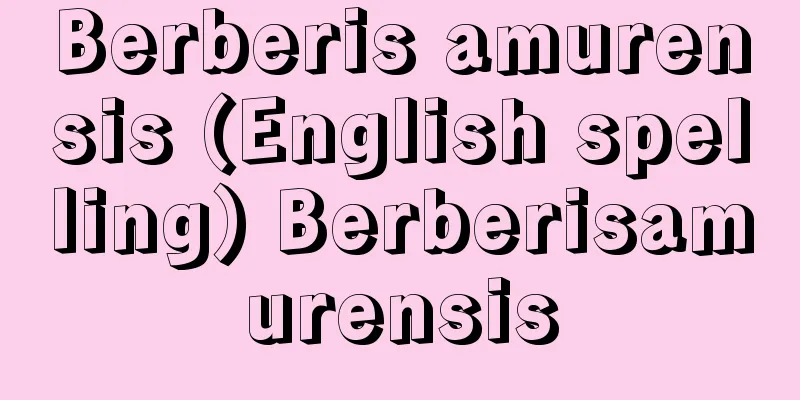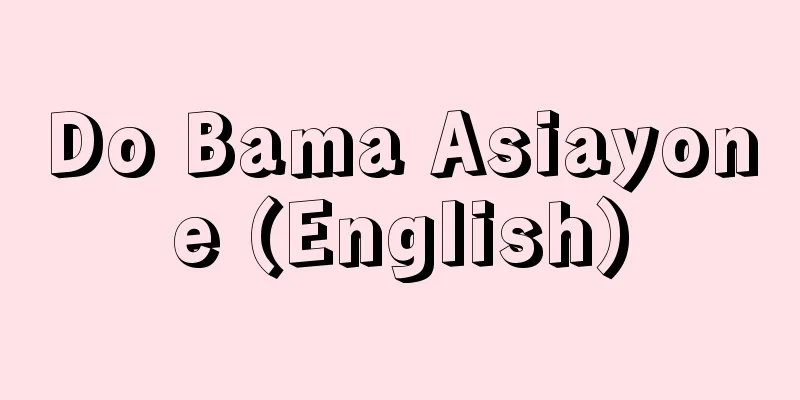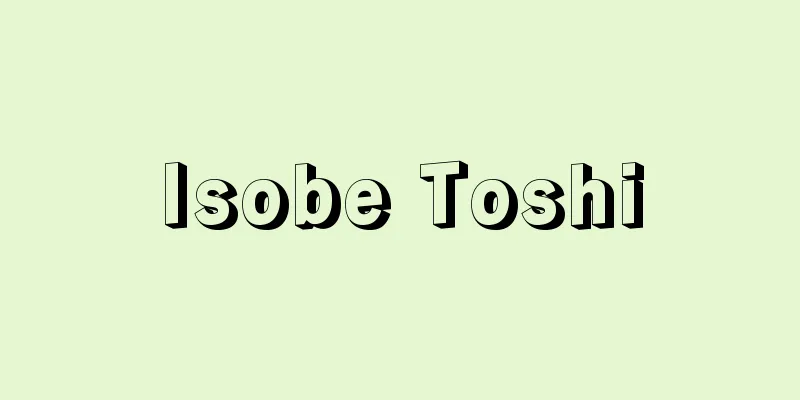Bansho Shirabesho - Bansho Shirabesho

|
A Western studies research and educational institute of the Edo Shogunate. Following the arrival of Commodore Perry in 1853 (Kaei 6), the Shogunate sought to strengthen its diplomatic and military affairs, and as one measure, planned to establish an institute to handle Western studies. Preparations began in 1855 (Ansei 2) under the temporary name of the Western Studies Institute, led by director Koga Kinichiro, and it opened in 1856 under the name Bansho Shirabesho, with classes beginning in January 1857. The institute's duties included translating and researching Western books and literature, teaching Western studies, censoring Western books and translations, printing and publishing, and some technical training, and famous Western scholars such as Mitsukuri Genpo, Sugita Seikei, Matsuki Koan (Terashima Munenori), and Murata Zoroku (Omura Masujiro) were appointed as professors in charge of these tasks. Initially, there was only one subject offered, Dutch Studies, but between 1860 (Man'en 1) and 1862 (Bunkyu 2), English, French, and German foreign languages, as well as science and technology departments such as refining, machinery, products, and mathematics were successively opened. The school was originally located in Kudanzakashita, Edo, but moved to Ogawa-cho in 1859 (Ansei 6), and to outside Hitotsubashi Gate in 1862. The Bansho Shirabesho changed its name to Yosho Shirabesho in 1862 and to Kaisei-sho in 1863, and after the Meiji Restoration it was transferred to the Meiji government and became one of the predecessors of the University of Tokyo. [Fumiko Miyazaki] "Japanese Universities" by Toshiaki Okubo (1943, Sogensha) " A History of Western Studies at the End of the Tokugawa Period" by Jiro Numata (1950, Tonoshoin) "A History of the Introduction of Western Studies" by Jiro Numata (1960, Shibundo) [References] | |Source: Shogakukan Encyclopedia Nipponica About Encyclopedia Nipponica Information | Legend |
|
江戸幕府の洋学研究教育機関。1853年(嘉永6)のペリー来航を契機に幕府は外交・軍事面の充実を図り、その一策として洋学を取り扱う機関の設置を計画した。1855年(安政2)洋学所という仮称のもとに頭取(とうどり)古賀謹一郎を中心として準備が開始され、1856年蕃書調所という名で開業、1857年1月授業も開始された。同所の任務には、洋書洋文の翻訳・研究、洋学教育、洋書・翻訳書などの検閲、印刷・出版、一部の技術伝習があり、これを担当する教授方には、箕作阮甫(みつくりげんぽ)、杉田成卿(せいけい)、松木弘安(こうあん)(寺島宗則(むねのり))、村田蔵六(ぞうろく)(大村益次郎)ら著名な洋学者が任ぜられた。当初、設置科目は蘭学(らんがく)1科であったが、1860年(万延1)より1862年(文久2)にかけ、英・仏・独の外国語、および精煉(せいれん)・器械・物産・数学などの科学技術部門諸科が次々に開設された。構舎は初め江戸九段坂下にあったが、1859年(安政6)に小川町へ、1862年に一橋(ひとつばし)門外へ移転した。蕃書調所は1862年に洋書調所、1863年に開成所と名称を変え、維新後は明治政府に移管され東京大学の前身校の一つとなった。 [宮崎ふみ子] 『大久保利謙著『日本の大学』(1943・創元社)』▽『沼田次郎著『幕末洋学史』(1950・刀江書院)』▽『沼田次郎著『洋学伝来の歴史』(1960・至文堂)』 [参照項目] | |出典 小学館 日本大百科全書(ニッポニカ)日本大百科全書(ニッポニカ)について 情報 | 凡例 |
<<: Burne-Jones (English spelling) Edward Coley Burne-Jones
Recommend
Neurospora crassa - Neurospora crassa
A fungus belonging to the Ascomycetes order. It i...
Affines
…Kinship ties are linked across generations throu...
Sitting posture - Zahou
The way of sitting. Bodhisattva Bosatsu and Buddhi...
Remote sensing
Exploring the state of the ocean from a remote loc...
Door-type
This is a tax law issued by the Jin Dynasty in 28...
Sanjo Sanetsumu
A nobleman in the late Edo period. Born in Kyoto ...
Tokihiko Okada
A film actor. His real name was Eiichi Takahashi....
Stock investment trust - Kabushikitoushi
⇒Stock investment trust Source: About Shogakukan D...
Aohakachoja - Aohakachoja
...From the end of the Heian period to the Kamaku...
Polytrichum formosum (English spelling)
...The cap of the moss is deeply covered with hai...
α-Amyrin
...Succulent plants of the Euphorbia genus of the...
Akimoto Shitomo - Akimoto Yukitomo
1820-1876 A daimyo in the late Edo period. Born o...
Australian Aborigines - Australian Aborigines
The term "Australian Aboriginal" was co...
Sign of the future - Mincho
A painter-monk from the early Muromachi period. H...
Aralia - Aralia
1. A perennial plant of the Salamandaceae family....









